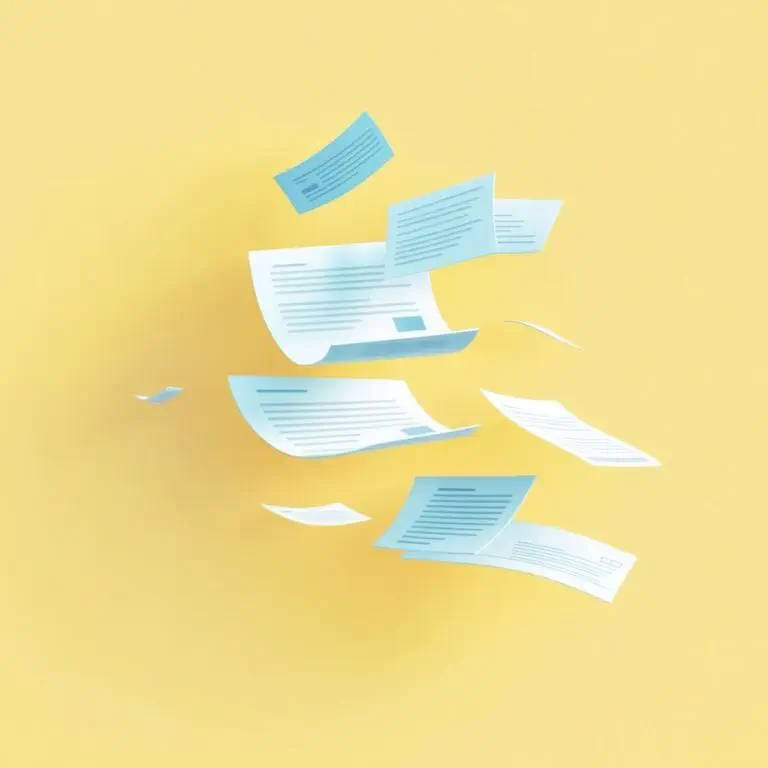What does invoicing mean? Definition and relevance #
An invoice is a document with which you ask your customers to pay a certain amount of money. When you invoice something, this means that you bill a customer for a service or product. Invoicing is therefore also called billing.
Invoicing ensures the revenue of your company and is therefore the most important process in financial accounting. Invoicing plays an equally central role in liquidity planning and the dunning process, which enforces claims against defaulting customers. Invoices also form the basis for calculating sales tax.
The advantages of professional invoicing #
At first glance, the advantages of invoicing seem obvious: you invoice services or goods to generate revenue. Nowadays, electronic invoicing is clearly superior to paper invoicing when it comes to the other advantages of invoicing:
- Time efficiency: Electronic invoices can be created with just a few clicks and sent directly by e-mail or made available online.
- Transparency: Your customers quickly gain insight into their invoices and clarity about services rendered, prices and taxes.
- Better overview: Keep an eye on your incoming payments, outstanding invoices and turnover at all times.
- Automation: Recurring processes such as payment reminders simply run themselves in an invoicing program.
- Legal security: Invoicing software usually contains ready-made templates in which all mandatory information for the invoice is integrated.
The main disadvantages of invoicing are the high effort and susceptibility to errors – especially if you are still writing invoices manually in Excel spreadsheets or text documents. Since invoicing is essential for companies, you should optimize and automate the process as much as possible to minimize human error. Modern software solutions can help with this. You can find out more about this further down on this page.

Two types of invoicing in companies #
Depending on when you invoice a service, a distinction is made between pre-invoicing and post-invoicing. If you issue an invoice before delivery, this is referred to as pre-invoicing. This is particularly common for online orders. As a company, however, you should then have enough goods in stock to be able to deliver promptly.
If you enclose the invoice with the delivery or send it afterwards, this is called post-invoicing. When it comes to liquidity, please note that this prolongs the payment process and increases the risk of non-payment. Particularly in the case of more complicated orders (e.g. construction projects), however, invoicing can only take place after completion. Step-by-step invoicing helps here.
The invoicing process #
Invoicing is part of your company’s accounting system and essentially works like this:
- Prepare invoice: Enter all relevant data on the invoice, such as items, prices, quantities, tax rates, the date and customer details.
- Send invoice: Have the created invoice sent to the customer – whether by post, e-mail or online portal.
- Check incoming payments: Reconcile incoming payments with your outstanding receivables and send payment reminders if necessary.
- Post and archive: Post the business transaction and file all documents carefully.
Legal aspects of invoicing #
In the UK, invoicing is regulated in detail in the Value Added Tax Act 1994 and the VAT Regulations 1995. These require you to issue invoices to other businesses for taxable supplies. There is no such obligation when selling to private individuals, unless the customer requests it.
Invoicing deadlines #
The deadline for invoicing depends on whether your customer is a company or a private individual:
- If the recipient of the service is a company, you must observe a time limit of 30 days for invoicing. This runs from the date of the taxable service or supply.
- As you are free to invoice services and sales to private individuals, the 30-day deadline for invoices only applies if they request it. However, most customers expect an invoice in certain cases.
Limitation period for invoices #
Always keep an eye on your outstanding receivables, because invoices can become time-barred! Invoices become time-barred after 6 years if you forget to invoice a service or do not take legal action against defaulting customers. After this period has expired, the debtor can refuse to pay an invoice and you can no longer enforce your claim in court.
The period begins on the day the debt becomes due, in most cases when the due date shown on the invoice has passed. So if you issued an invoice on July 1, 2019, payable within 30 days, it was due on July 31, 2019. Your claim has been time-barred since July 31, 2025.

Retention period for invoices #
According to the law, you have the obligation to make a copy of every invoice and keep it for 6 years. Archive every invoice in an audit-proof, read-only manner – regardless of whether it is digital or printed. This is because subsequent changes to invoicing are prohibited.
If you still prefer paper invoices to electronic invoicing, you should plan for storage space, as file folders quickly fill shelves. You must also ensure that copies of invoices are destroyed in accordance with data protection regulations at the end of the retention period.
Mandatory information for invoicing #
A full VAT invoice is required for amounts over £250. This must contain the following information:
- Name and address of the service provider and the service recipient
- Tax number or VAT registration number
- Date of issue
- Consecutive invoice number
- Quantity and type of goods or services supplied
- Date of service or delivery
- Net and gross amount and any discounts
- Tax rate and amount or reference to tax exemption
Typical errors in invoicing #
If you make a mistake when invoicing, this can have tax and, in the worst case, legal consequences. You should therefore work with concentration and make sure meticulously that the invoice contains all mandatory information and that the figures are correct. Nevertheless, it can happen quickly: All it takes is a little inattention – and a transposed figure or typing error has crept in.

Other typical errors in invoicing are
- There is no unique number for each invoice.
- The VAT is shown incorrectly.
- The terms of payment are not specified.
- The invoice copy is processed after dispatch.
How to avoid invoicing errors #
Below you will learn how to avoid the above-mentioned invoicing errors.
Generate consecutive invoice number #
The tax office only accepts invoices that have an invoice number. However, it is also advantageous for your internal financial accounting if each invoice can be clearly and traceably assigned to the respective business transaction. A consecutively ascending number ensures that each invoice is unique.
If you number your invoices manually, duplicates or missing numbers may be created by mistake. A professional invoicing program, on the other hand, generates a unique identification number for each new invoice. It is therefore advisable to have an automatic number generated by a software program.
Correctly show VAT in invoicing #
In the UK, the regular VAT rate is 20 percent and the reduced VAT rate is 5 percent. Depending on the type of goods and services you invoice, different tax rates may apply. It is not always clear which tax rate applies in which case. Find out more and make sure you pay tax on your products and services correctly.
It can become even more complicated if you invoice foreign transactions: For example, if your customer is a company in the EU, it must pay VAT to the tax office in its respective member state. This is called the reverse charge procedure. In this case, you do not show UK VAT, but instead note on the invoice that the recipient of the service is liable for VAT. To do this, you must state both your VAT identification number and that of your customer company on the invoice. Furthermore, import duties may apply.
Specify terms of payment during invoicing #
You can use the terms of payment to specify when and how your customers should pay for goods or services. For example, payment can be made by bank transfer, direct debit or cash. Depending on the payment method, don’t forget to enter your full bank details.
The payment target defines the period within which your customers must pay the invoice. This is usually between 14 and 30 days. The due date marks the exact date on which the payment should be received at the latest. Make this clear on the invoice.
Prepayment is particularly widespread in online retail. With this payment method, the customer makes the payment before receiving the goods or services. The advantage for you: By not shipping your products until payment has been received, you minimize the risk of non-payment. When invoicing, point out that you have already received the invoice amount.
Incorrect invoice sent – what now? #
As soon as you realize that you have issued an incorrect invoice, you must cancel it and correct it with a new invoice that you send to the invoice recipient. This not only creates a considerable amount of extra work, but often also confuses or even upsets the customer. In this case, it is important that you react professionally and apologize for the incident.
You must keep both the original invoice and the correction invoice for accounting purposes. A credit note is also required for invoices that have already been paid and for which an excessive amount has been charged.
Checklist for smooth invoicing #
Here is another overview of the most common stumbling blocks in invoicing and what you should look out for when finally checking an invoice:
- no typing errors in the name and address of the service recipient
- no transposed numbers in the invoice number, tax number or VAT ID
- all invoice items (services, quantities, prices) and net amounts are correct
- VAT is shown correctly
- Invoice date, invoice amount and payment deadline are clearly visible

Free template for electronic invoicing #
Electronic invoicing with invoicing software like the no-code platform from SeaTable saves you a lot of time and paper. Other advantages for invoicing in your company are the reduced susceptibility to errors, the automation of recurring processes and the simple and clear data analysis. Prepared invoice templates, which already contain all mandatory information, help you to meet the legal requirements.
Sounds good? Then start with the free template from SeaTable and design your company’s invoicing according to your ideas! For a taste of our template, scroll through our interactively embedded template:
The advantages for your invoicing are:
- Simply create and send digital invoices at the touch of a button
- Intelligent links to other tables in your database
- Design individual invoice layouts in multiple languages
- Real-time synchronization for simultaneous team collaboration
- Various statistics, evaluation and visualization options
Very important: Your data is optimally protected when invoicing with SeaTable and stored in German data centers. You also have the option of hosting SeaTable Server yourself and thus retaining full data sovereignty. If you opt for the SeaTable Cloud , your data and invoices can also be accessed online at any time and from anywhere.
Frequently asked questions #
Are invoices and bills the same thing?
What does invoicing mean?
What are the mandatory details on an invoice?
A full VAT invoice is required for amounts over £250. This must contain the following information:
- Name and address of the service provider and the service recipient
- Tax number or VAT registration number
- Date of issue
- Consecutive invoice number
- Quantity and type of goods or services supplied
- Date of service or delivery
- Net and gross amount and any discounts
- Tax rate and amount or reference to tax exemption
Is there a deadline for invoicing?
How does invoicing work for companies in EU countries?
TAGS: Accounting
